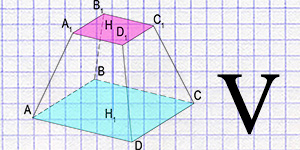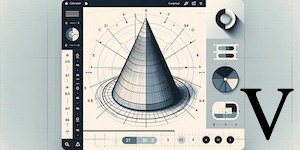Cube volume calculator

The cube is one of the most fundamental geometric shapes, present both in the natural environment and in man-made objects. This simple yet unique form consists of six square faces, each of the same size and connected at right angles. The cube can be viewed as a three-dimensional extension of a square in space.
Since ancient times, the cube has played a significant role in mathematics, architecture, art, and symbolism. In a mathematical context, cubes represent an ideal example for studying the basic concepts of stereometry and geometric transformations. In architecture and design, cubes are often used for their simplicity, symmetry, and universality, serving as the basis for creating complex and functional structures. In art and symbolism, the cube is typically associated with stability, balance, and perfect symmetry.
Geometric Description of a Cube
The cube is a three-dimensional figure, each face of which is a square. The main geometric elements of a cube include its faces, edges, and vertices.
Faces:
- The cube has six faces.
- Each face is a square of identical size.
Edges:
- The cube has twelve edges.
- All edges of the cube are equal in length.
Vertices:
- The cube has eight vertices.
- Three edges meet at each vertex.
Geometric Properties
- All angles of the cube are right angles (90 degrees).
- All faces of the cube are equal squares.
- The diagonals of all faces are equal and perpendicular to each other.
- The diagonal of the cube (the distance between two opposite vertices) is the longest line that can be drawn inside the cube.
Cube Characteristics Table
| Characteristic | Description |
|---|---|
| Faces | 6 squares |
| Edges | 12, all of equal length |
| Vertices | 8, with 3 edges converging at each |
| Angles | Right angles (90°) |
| Face diagonals | Equal and perpendicular to each other |
| Cube diagonal | The longest distance inside the cube |
Mathematical Basis for Calculation
The cube is a three-dimensional figure with all faces as squares. The volume of a cube is calculated using various mathematical formulas, depending on the known parameters.
Through Edge Length
The volume V of a cube, given the length of its edge \(\ a\), is calculated using the formula:
Through Face Diagonal
If the face diagonal of the cube \(\ d_s\) is known, the volume is calculated as:
Through Cube Diagonal
With a known cube diagonal \(\ d_c\), the volume is calculated as follows:
Through Inscribed Sphere Radius
If the radius of a sphere inscribed in the cube \(\ r_i\) is known, the volume of the cube is found as:
Through Circumscribed Sphere Radius
When the radius of a sphere circumscribed around the cube \(\ r_o\) is known, the volume of the cube is calculated as follows:
These formulas demonstrate various methods of calculating the volume of a cube based on different initial data.
Calculation Examples
- For a cube with an edge length of 5 m, volume: V = 53 = 125 m3.
- If the side diagonal of the cube is 7 m, volume: V = (7/√2)3 ≈ 85.85 m3.
- With a cube diagonal of 10 m, volume: V = (10/√3)3 ≈ 115.47 m3.
- If the radius of the inscribed sphere is 3 m, cube volume: V = (2*3)3 = 216 m3.
- For a cube with a circumscribed sphere radius of 4 m, volume: V = (2*4/√3)3 ≈ 148.15 m3.
These examples demonstrate how changes in edge length affect the volume of the cube.
Conclusion
The volume of a cube is an important geometric parameter, playing a significant role in many practical and theoretical areas. From architecture to logistics, knowing how to calculate the volume of a cube significantly impacts the solution of a variety of tasks. Understanding the different methods of calculating cube volume expands mathematical knowledge and enables its application in various aspects of life and professional activities.
Comments on the calculator

Calculator for accurately calculating the volume of a pyramid using the height and base area or one of the sides of the base.
Go to calculation
Calculation of the volume of a truncated pyramid through the values of the areas of the bases and height.
Go to calculation
Calculator for accurately calculating the volume of a cone using height or apothem and the base area or base radius.
Go to calculation